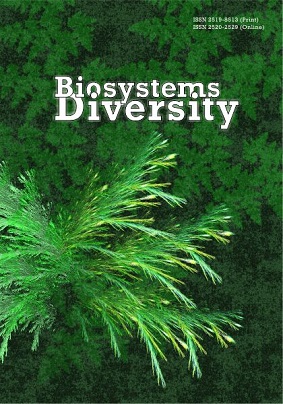Modification of the epicuticular waxes of plant leaves due to increased sunlight intensity
Modification of the epicuticular waxes of plant leaves due to increased sunlight intensity
Author(s): Y. V. Lykholat, N. A. Khromykh, O. O. Didur, A. A. Alexeyeva, T. Y. LykholatSubject(s): Geography, Regional studies, Agriculture, Human Ecology, Environmental interactions
Published by: Дніпропетровський національний університет імені Олеся Гончара
Keywords: elm; cuticular wax; hydrocarbon composition; steppe climate; metabolic adaptation;
Summary/Abstract: Climatic changes observed around the world in recent years are associated with an increase in the solar radiation intensity and temperature and reduction in the humidity. Fluctuations of environmental factors significantly change the conditions for the existence of plants, which dictates the need for adaptive reactions of plant organisms at the different levels of their organization. Such dangerous processes as excessive heating of the surface of plant leaves and water loss can be prevented by the formation of a cuticle, which is a complex composition consisting of cutin and the soluble intracuticular and epicuticular waxes. We suggested that the structure, component composition and properties of the cuticle of trees undergo adaptive changes due to microclimatic conditions in different parts of the tree crown. The study was aimed at the identification and evaluation of light-induced differences in the accumulation and composition of leaf epicuticular waxes of Ulmus trees (native U. minor Mill. and alien U. pumila L.), and was conducted in 2018–2019 in Dnipro city located in the steppe zone of Ukraine. Analysis of the waxes’ chloroform extracts was carried out using GC Shimadzu 2010 PLUS equipped with a flame ionization detector and capillary column SP-2560. The highest amount of epicuticular waxes (12.23 ± 0.39 µg/cm2 ) was on the sunlit leaves of U. pumila, and wax deposits on the sunned leaves exceeded twice those on the shaded leaves in both U. minor and U. pumila. Long-chain hydrocarbons detected in the epicuticular waxes of both elm species were represented by free fatty acids, aldehydes, alcohols, and n-alkanes in various ratios. In the epicuticular waxes of U. minor, fatty acids dominated both on shaded and sunned leaves, while alkanes together with alcohols were the main components in U. pumila waxes, especially on the sunlit leaves. According to our results, local high illumination of leaves in the crown of both elm species caused increase in share of long-chain alkanes (1.2–1.9 times), but simultaneous reduction of the content of free fatty acids (1.5–16.8 times) in the epicuticular waxes’ composition. General patterns of the leaf epicuticular waxes’ modification due to increased solar radiation and air temperature can indicate the adaptive metabolic responses of woody plants to changing climatic conditions.
Journal: Biosystems Diversity
- Issue Year: 28/2020
- Issue No: 1
- Page Range: 29-33
- Page Count: 5
- Language: English

